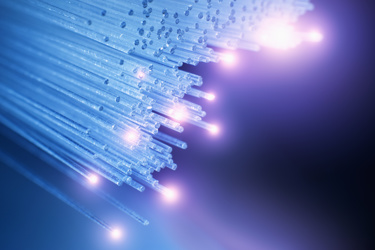Fiber Optics, Endoscopy, And The Future

By John Oncea, Editor

In the field of complex medical instruments and procedures, the use of fiber optics has become crucial in creating new and advanced sensors. These sensors have the potential to enhance the precision and accuracy of machinery, including automated surgical robots.
Fiber optics are impacting nearly every conceivable industry, from communications to automotive to defense. Not to be left out is the medical fiber optics industry which, according to NAI, is poised to be worth $1 billion by 2024. This growing interest in optical fibers and fiber-optic sensors (FOS) has resulted in a surge of research and development for new products.
“Given their EM immunity, intrinsic safety, small size and weight, autoclave compatibility, and capability to perform multi-point and multi-parameter sensing remotely, fiber-optic-based sensors are ideally suited for a broad variety of applications – invasive and non-invasive – in life sciences, clinical research, medical monitoring, and diagnostics, ranging from laser delivery systems to disposable blood gas sensors to intra-aortic pressure probes,” writes Global Information.
The use of fiber optics in medical devices, including endoscopes and laparoscopes, has significantly improved the surgical process for patients. These devices utilize thin and flexible fibers to transmit real-time images and light, allowing doctors to perform surgeries through small incisions. As a result, patients experience faster recovery times and less scarring. In addition, the advanced capabilities of deep fiber connections enable telemedicine and remote surgeries with reduced latency and high-quality live video streaming.
NAI notes that fiber optics played a part in numerous healthcare advancements including “minimally invasive surgery, the increased use of disposable probes and catheters, and the automation of medical procedures all show their influence.” While generally seen as a positive, the use of fiber optics has left surgeons with a diminished sense of haptic feedback that would have occurred if performing the procedures manually.
As a result, researchers are working on ways to increase haptic feedback when surgeons are using these tools. “The difficult part of emulating human touch … is that humans experience in stages the stimuli we understand as touch,” writes NAI. “Enabling a medical fiber optics-equipped robot to process texture, force, and position the way the human brain does is a complex computational problem.”
Scientists are currently exploring various methods of developing tactile sensors such as piezoelectricity, capacitors, and optics. These sensors could be utilized in a haptic feedback system that incorporates medical fiber optics and sensors to create fully functional artificial skin. Moreover, this technology could potentially lead to the development of surgical gloves that do not compromise on sensation due to the material.
Other technologies that are helping advance endoscopy operative devices according to Digital Journal, are:
- Miniaturization: Endoscopy operative devices are becoming smaller and more maneuverable, allowing for more precise procedures in tight spaces.
- High-definition imaging: High-definition imaging technologies, such as narrow-band imaging and chromoendoscopy, provide clearer and more detailed images during endoscopic procedures, improving diagnostic accuracy.
- Robotics: Robotics is being used to improve the precision and efficiency of endoscopic procedures. Robotic endoscopy devices can perform complex maneuvers that are difficult for human operators to perform.
- Wireless endoscopy: Wireless endoscopy devices allow for more flexible and mobile endoscopic procedures, as they do not require a physical connection to a monitor or other equipment.
- Artificial intelligence: Artificial intelligence (AI) is being used to improve the accuracy and efficiency of endoscopic procedures. AI algorithms can analyze endoscopic images in real time, providing more accurate diagnoses and reducing the risk of missed lesions.
- Disposable endoscopy devices: Disposable endoscopy devices, such as disposable biopsy forceps and snare devices, reduce the risk of infection and eliminate the need for sterilization, making endoscopic procedures safer and more convenient.
The field of endoscopy is benefiting from innovations that enhance the accuracy and efficiency of procedures, while also improving their safety and accessibility for patients. As a result, the endoscopy operative devices market is poised for continued growth in the foreseeable future.
